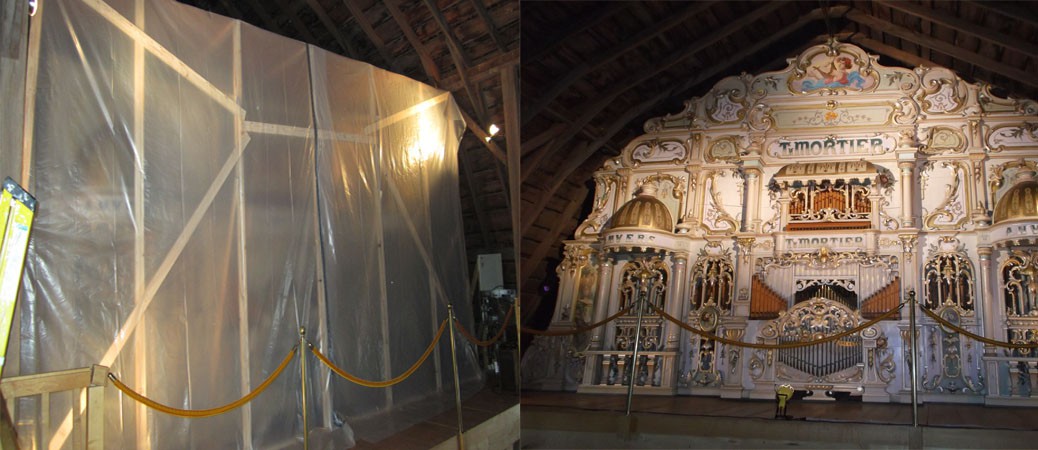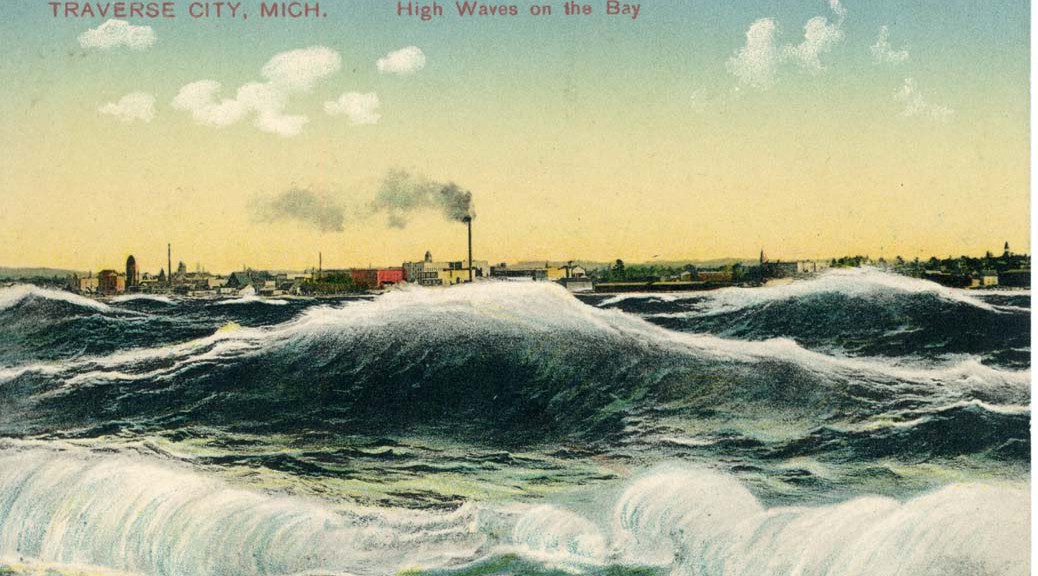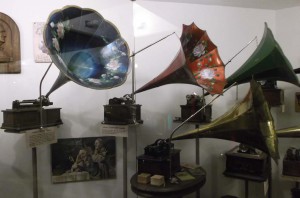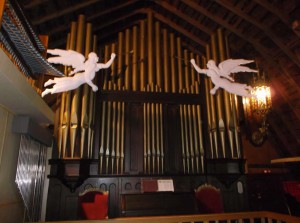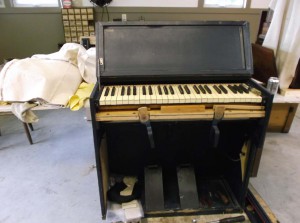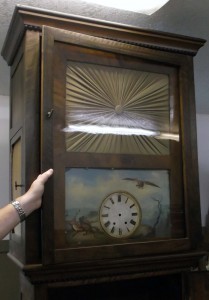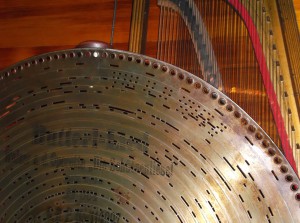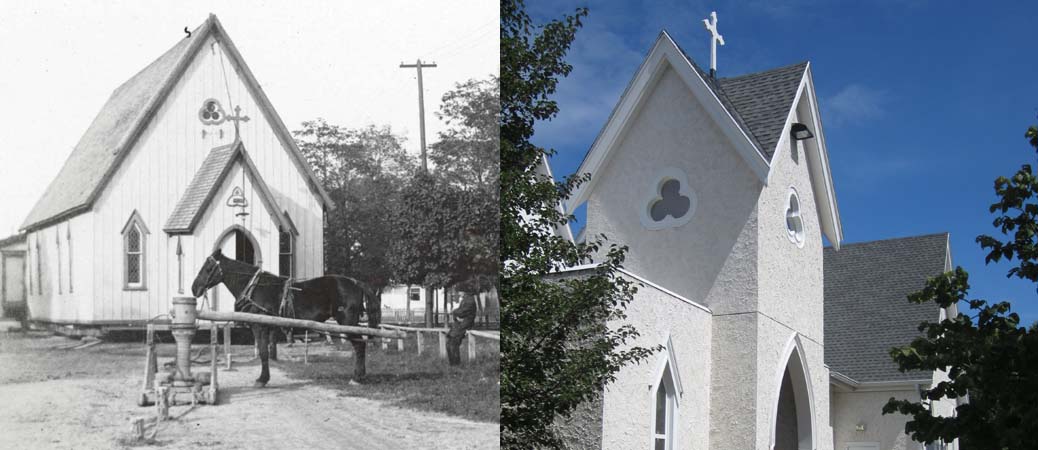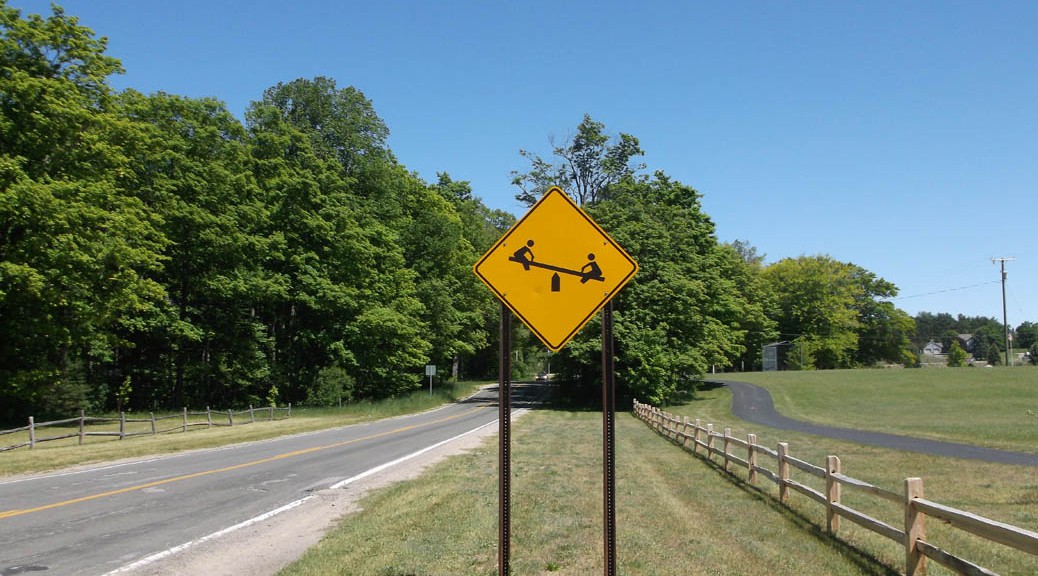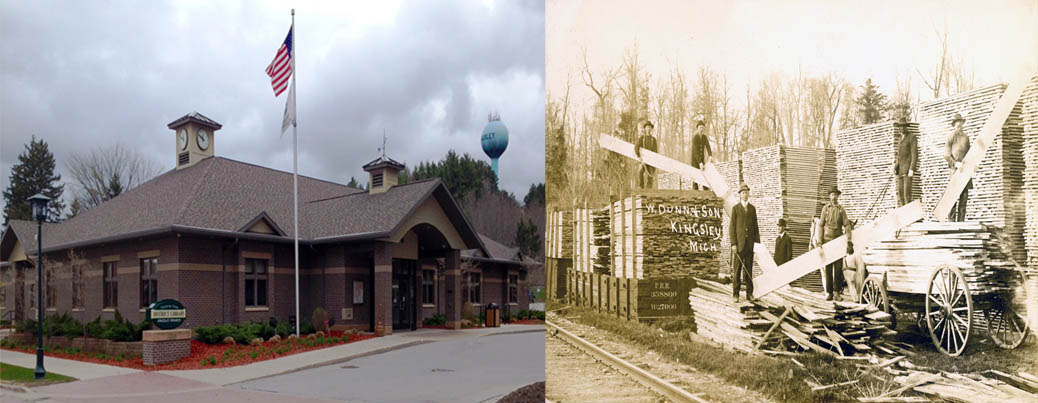Recognized by Forbes.com as one of the ten reasons to visit Michigan’s Lower Peninsula, the Music House Museum offers a unique collection of instruments that provide guests with a walk through the history, the artistry, and the engineering of automated music.
In the off-season winter months, local historical societies spend time regrouping, or reroofing in the case of the Music House Museum. In preparation for their upcoming project to replace the roof of the 1910 barn that houses major pieces of the Museum’s collection, volunteers have been busily erecting protective scaffolding and plastic sheeting to minimize potential damage to the larger, unmoveable instruments, in addition to the regular winterizing of the building.

Bruce Ahlich, Vice-President of the Board of Directors and Chairman of the Collections Committee, invited Grand Traverse Journal back (see our first article in the December 2014 issue) to see exactly how the Museum is managing such a huge undertaking. The Board of Directors has been planning this project for over two years, which includes working on raising the necessary funding, estimated as potentially reaching $160,000 for the roofing ($116,000), structural repairs, removal of waste, cleaning and reassembly of the displays. Fundraising efforts for the reroofing project thus far have included several grants. Further donations are being accepted through the donation site Go Fund Me at
http://www.gofundme.com/musichouseroof
“For the well-being of the collection, it is imperative to replace the 30 year old roof now, before leaks develop and put the instruments at risk,” explains Ahlich. “We believe there are at least two, possibly three layers of roof that needs to be removed first. These include a couple layers of asphalt shingles and the original 1910 cedar shingles”. Next time you are at the Music House, look up at the rafters for a little history; The rafters and beams still showing bark are from the original barn, built sometime in the 1880s and incorporated into the 1910 structure. The insulated new roof will pay the Museum back in time by reducing heating and cooling costs.
The Museum plans to take full advantage of the removal of most of the displays for the roofing project to also improve the visitor experience. “We will be selective in returning some of the decorative pieces to their place in the Museum while being mindful of the history of the area and the era we are trying to capture”. All of the instruments will be returned to the displays.
Wondering how you can help beyond monetary donations? Volunteers will be needed upon completion of the reroofing to help clean-up the dirt and debris left after removing the roof and reassembling and cleaning the displays. This work will need to be done quickly, as the 2015 season starts off with a bang with the Museum opening on May 1st, and on the third weekend in May hosting the Musical Box Society International’s regional convention. If interested in helping, please contact the Museum at 231 938-9301 or via e-mail at info@musichouse.org.
 One of the pieces receiving special preparation and protection is the crown jewel of the Museum’s collection, the 1922 “Amaryllis” Mortier Dance Hall Organ, shown here with scaffolding built and covered with plastic sheeting to surround and protect its 30 foot wide by18 foot high facade. Of the approximately 1000 plus similar instruments crafted and used in Northern and Central Europe from 1908 to the 1930s, the Amaryllis (originally built for the Victoria Palace in Ypres, Belgium) is one of two known Mortier survivors with their original facade and specification of this particular size and design. Many dance and fairground organ were casualties of the immediate post-World War II era; The devastation and poverty of war-torn western Europe and the advancement of the phonograph and radio led many of the larger instruments to be simply burned as firewood to heat homes after salvaging the metal pipes from them as scrap.
One of the pieces receiving special preparation and protection is the crown jewel of the Museum’s collection, the 1922 “Amaryllis” Mortier Dance Hall Organ, shown here with scaffolding built and covered with plastic sheeting to surround and protect its 30 foot wide by18 foot high facade. Of the approximately 1000 plus similar instruments crafted and used in Northern and Central Europe from 1908 to the 1930s, the Amaryllis (originally built for the Victoria Palace in Ypres, Belgium) is one of two known Mortier survivors with their original facade and specification of this particular size and design. Many dance and fairground organ were casualties of the immediate post-World War II era; The devastation and poverty of war-torn western Europe and the advancement of the phonograph and radio led many of the larger instruments to be simply burned as firewood to heat homes after salvaging the metal pipes from them as scrap.

The Amaryllis had been stored unplayable for decades, and required months of meticulous restoration work in 1983, and again in 2013, to restore it. The 97 key organ plays folding, perforated cardboard music books, using hundreds of pipes and other instruments (snare and bass drums, whistles, cymbals) to play its library of lively waltzes, polkas, foxtrots, and other popular music of the 1920s and later eras. The huge flywheel which is used to play the organ was originally turned by hand; The use of a vintage electric motor to turn the flywheel now is one modern concession.
 Grand Traverse Journal will feature the Music House again in the spring, when the 1913 Bruder Fair Organ “Columbia” will be back from Ohio, where it is currently undergoing an $11,000 professional restoration that could not be done in-house. A generous $5,000 matching gift, some Endowment monies and many private donations have enabled to Museum to fund the project, as well as acquire some new music book stock by which to play it. Other newly refurbished instruments to be featured in the spring will be a 1910 Welte-Mignon Vorsetzer and an 1830 Black Forest organ clock, as well as the completion of the Wurlitzer organ project’s original toy chest and glockenspiel.
Grand Traverse Journal will feature the Music House again in the spring, when the 1913 Bruder Fair Organ “Columbia” will be back from Ohio, where it is currently undergoing an $11,000 professional restoration that could not be done in-house. A generous $5,000 matching gift, some Endowment monies and many private donations have enabled to Museum to fund the project, as well as acquire some new music book stock by which to play it. Other newly refurbished instruments to be featured in the spring will be a 1910 Welte-Mignon Vorsetzer and an 1830 Black Forest organ clock, as well as the completion of the Wurlitzer organ project’s original toy chest and glockenspiel.
Amy Barritt is co-editor of Grand Traverse Journal. Special thanks to Bruce Ahlich, Vice-President of the Board of Directors of the Music House Museum.

